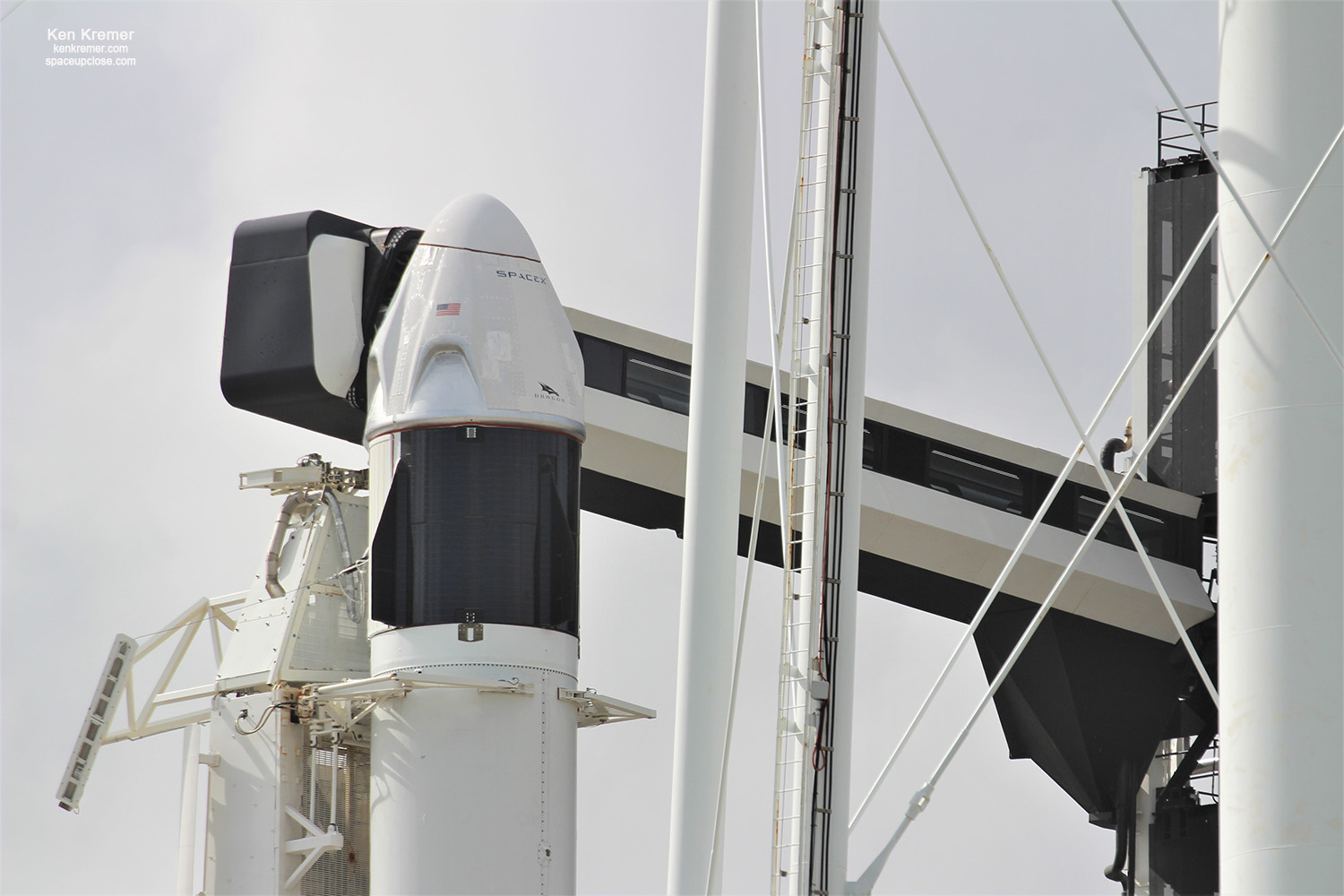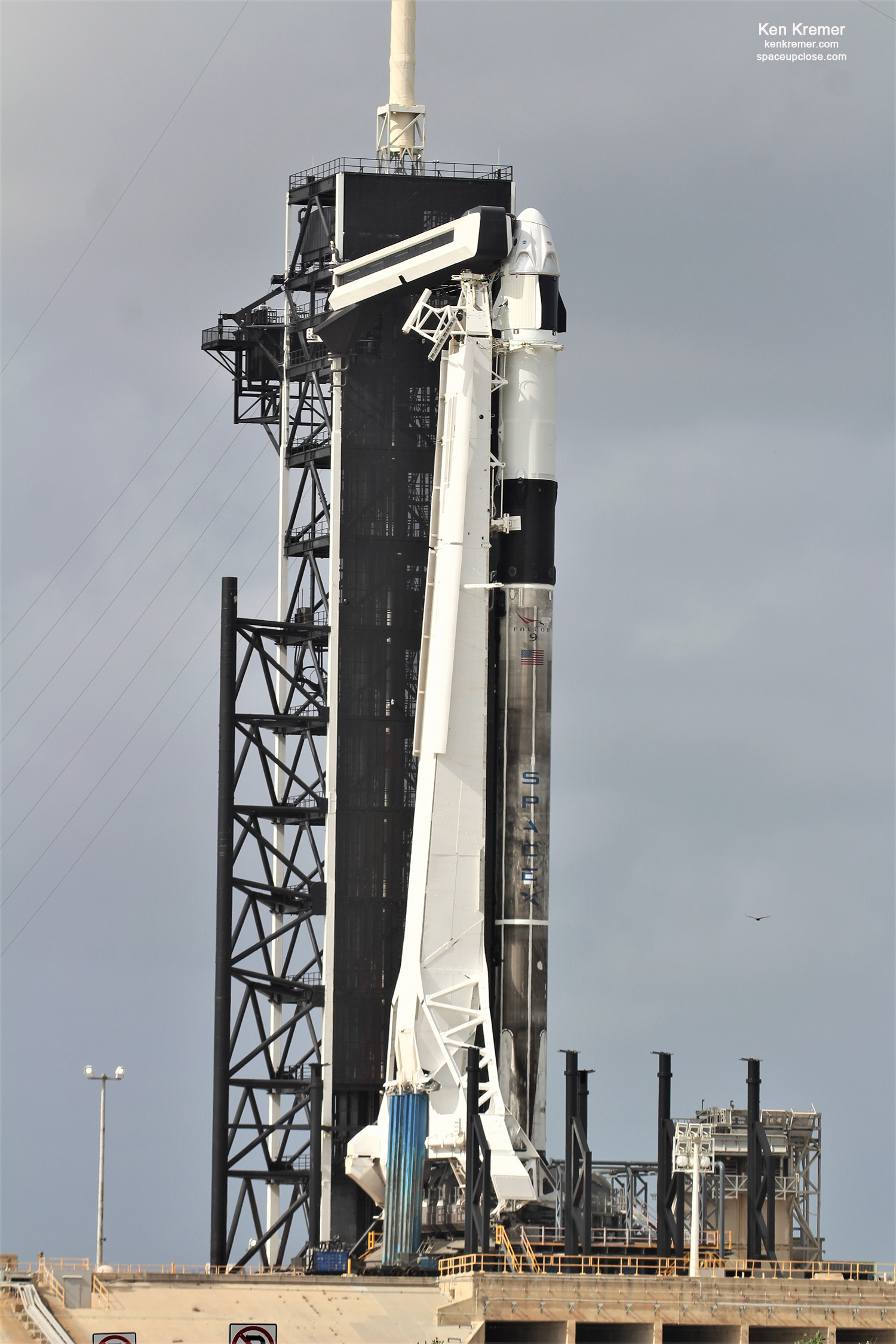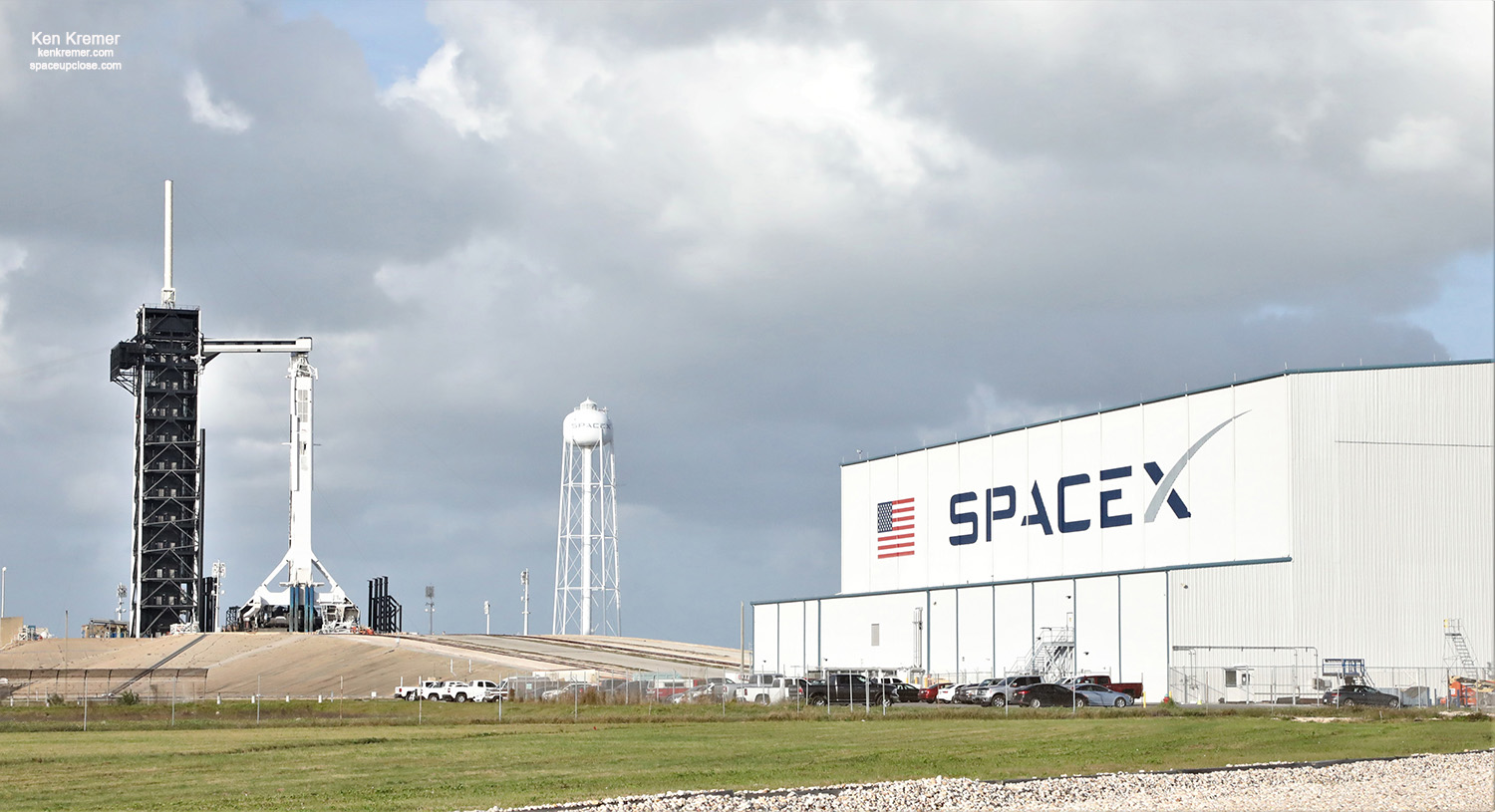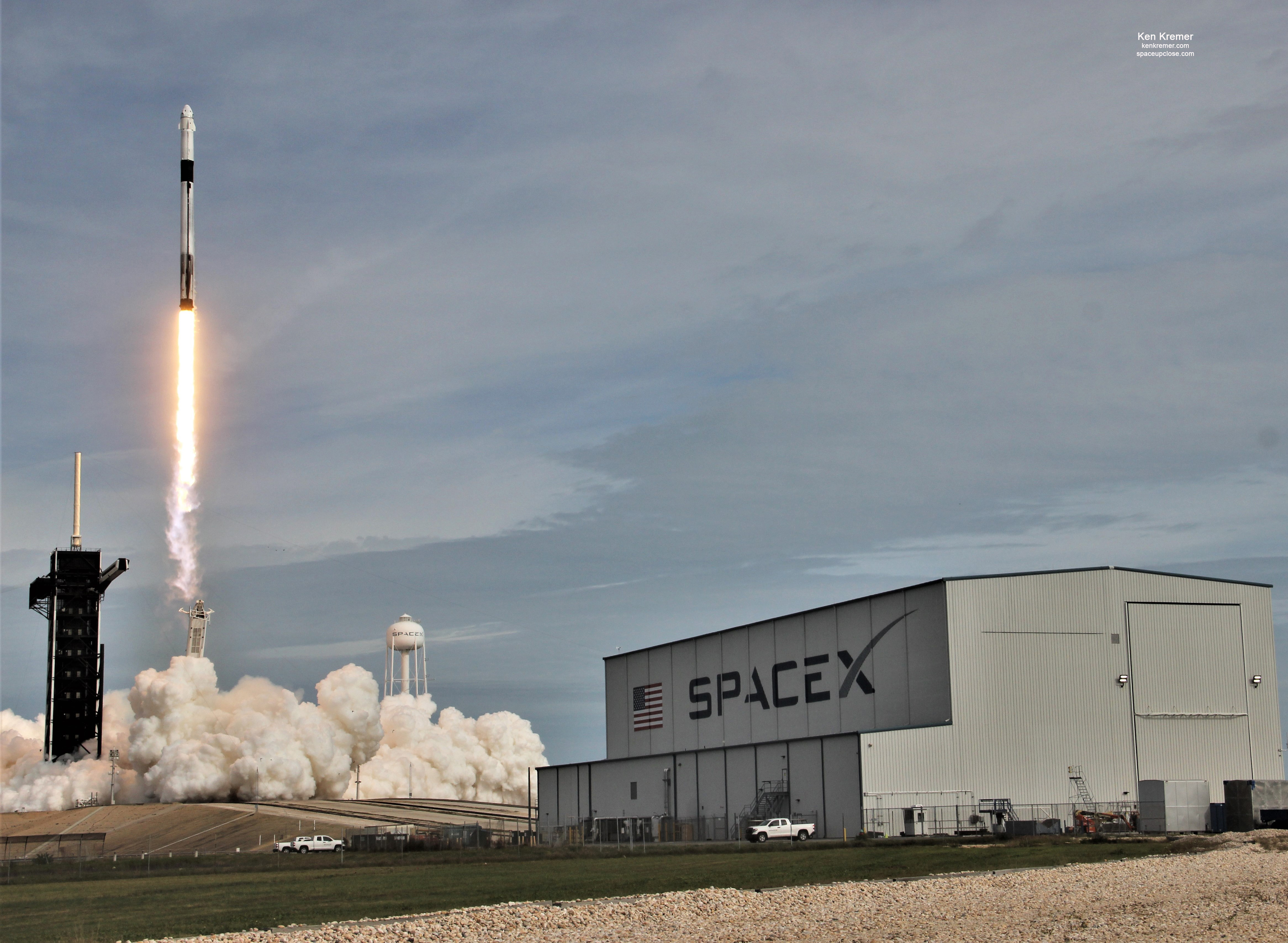
For SpaceUpClose.com & RocketSTEM
KENNEDY SPACE CENTER, FL – Today was a magnificent day for American human spaceflight following the ‘picture perfect’ demonstration test launch of the astronaut launch escape system for the commercial Crew Dragon spacecraft on a Falcon 9 rocket that paves the way for a resumption of crew launches from American soil as soon as this spring 2020.
The Falcon 9 rocket was failed on purpose to prove that the launch escape system on the Crew Dragon capsule -that would normally seat astronauts – would fire its emergency abort thrusters to push the spacecraft away from a catastrophic rocket failure in a split second and successfully save the astronauts lives and accomplish a parachute assisted splashdown safely in the ocean.
The NASA, SpaceX team successfully launched the Crew Dragon vehicle on the In Flight Abort (IFA) demonstration test that’s counts as its final major flight test before it begins carrying NASA astronauts to the International Space Station under NASA’s Commercial Crew Program.
After a 2 and a half hour delay due to poor weather liftoff of the SpaceX Falcon 9 and Crew Dragon took place at 10:30 a.m. EST from historic Launch Complex 39A at NASA’s Kennedy Space Center in Florida on a mission to show the spacecraft’s capability to safely separate from the rocket in the unlikely event of an inflight emergency.
Enjoy our Space UpClose images of the launch taken from the VAB roof and at the launch pad 39A.;
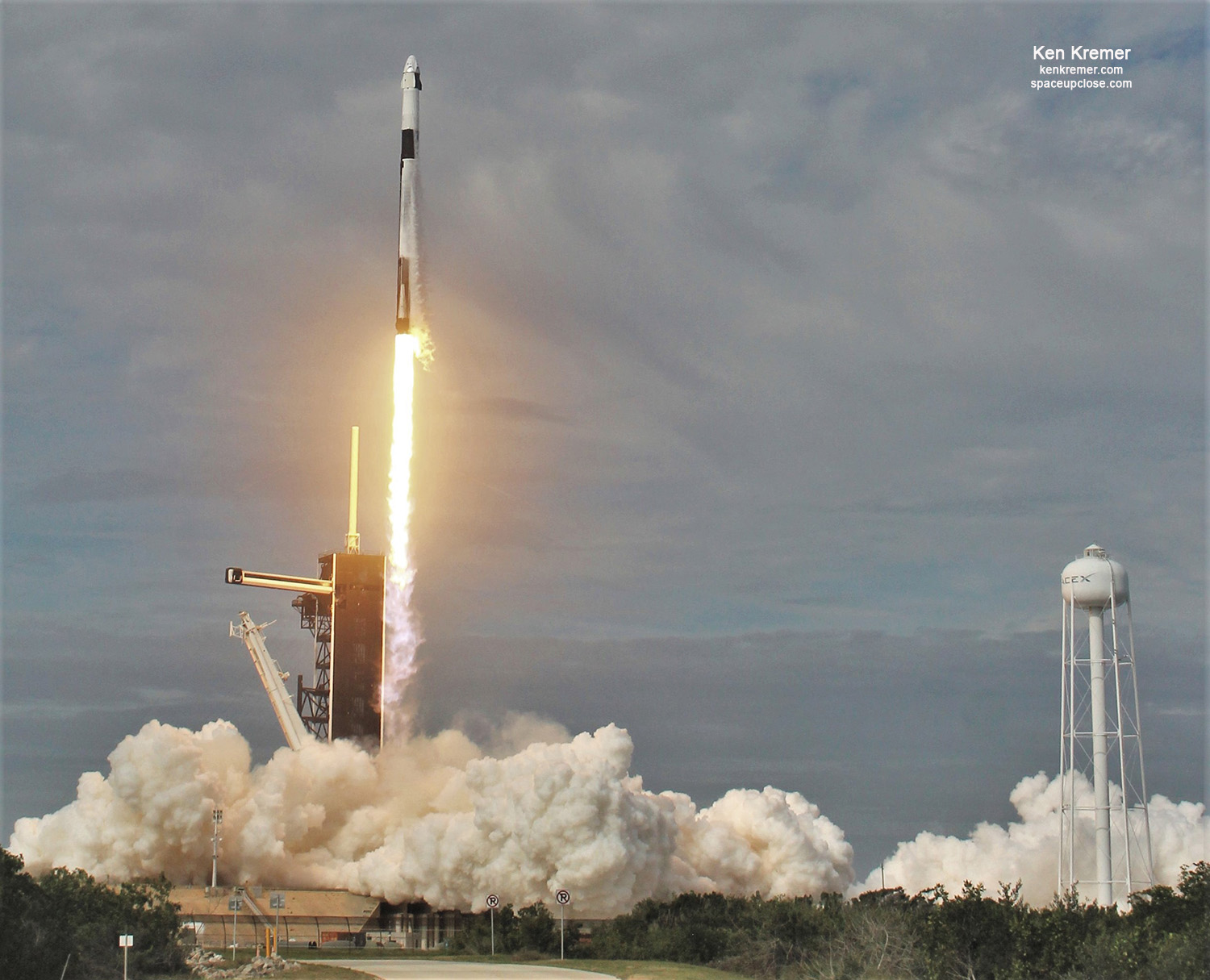
“This critical flight test puts us on the cusp of returning the capability to launch astronauts in American spacecraft on American rockets from American soil,” said NASA Administrator Jim Bridenstine, at the post test media briefing at the Kennedy Space Center.
“We are thrilled with the progress NASA’s Commercial Crew Program is making and look forward to the next milestone for Crew Dragon.”
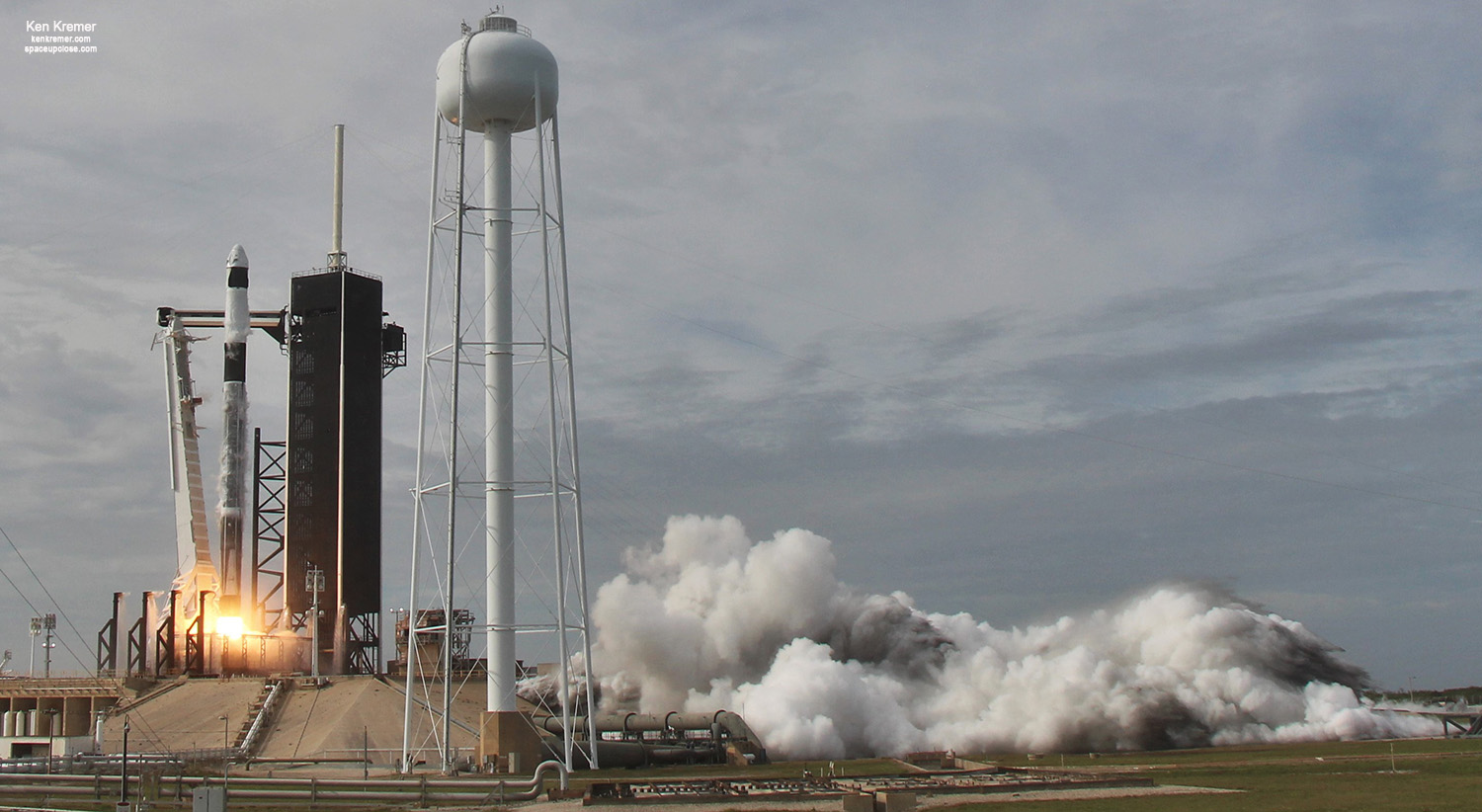
The IFA test flight test was planned to demonstrate the ability of Crew Dragon’s launch escape system to safely escape from a Falcon 9 rocket in the unlikely event of a rocket failure during launch.
As part of the test, SpaceX configured Crew Dragon to trigger a launch escape 84 seconds after liftoff.
The rocket did explode and disintegrate as predicted and at the moment the Dragon pushed away – creating a massive fireball seen by some but not all spectators due to much cloud cover.
“All major functions were executed, including separation, engine firings, parachute deployment and landing. Crew Dragon splashed down at 10:38 a.m. just off the Florida coast in the Atlantic Ocean,” said NASA at the briefing.
“As far as we can tell thus far, it’s a picture perfect mission. It went as well as one can possibly expect,” said Elon Musk, Chief Engineer at SpaceX. “This is a reflection of the dedication and hard work of the SpaceX and NASA teams to achieve this goal. Obviously, I’m super fired up. This is great.”
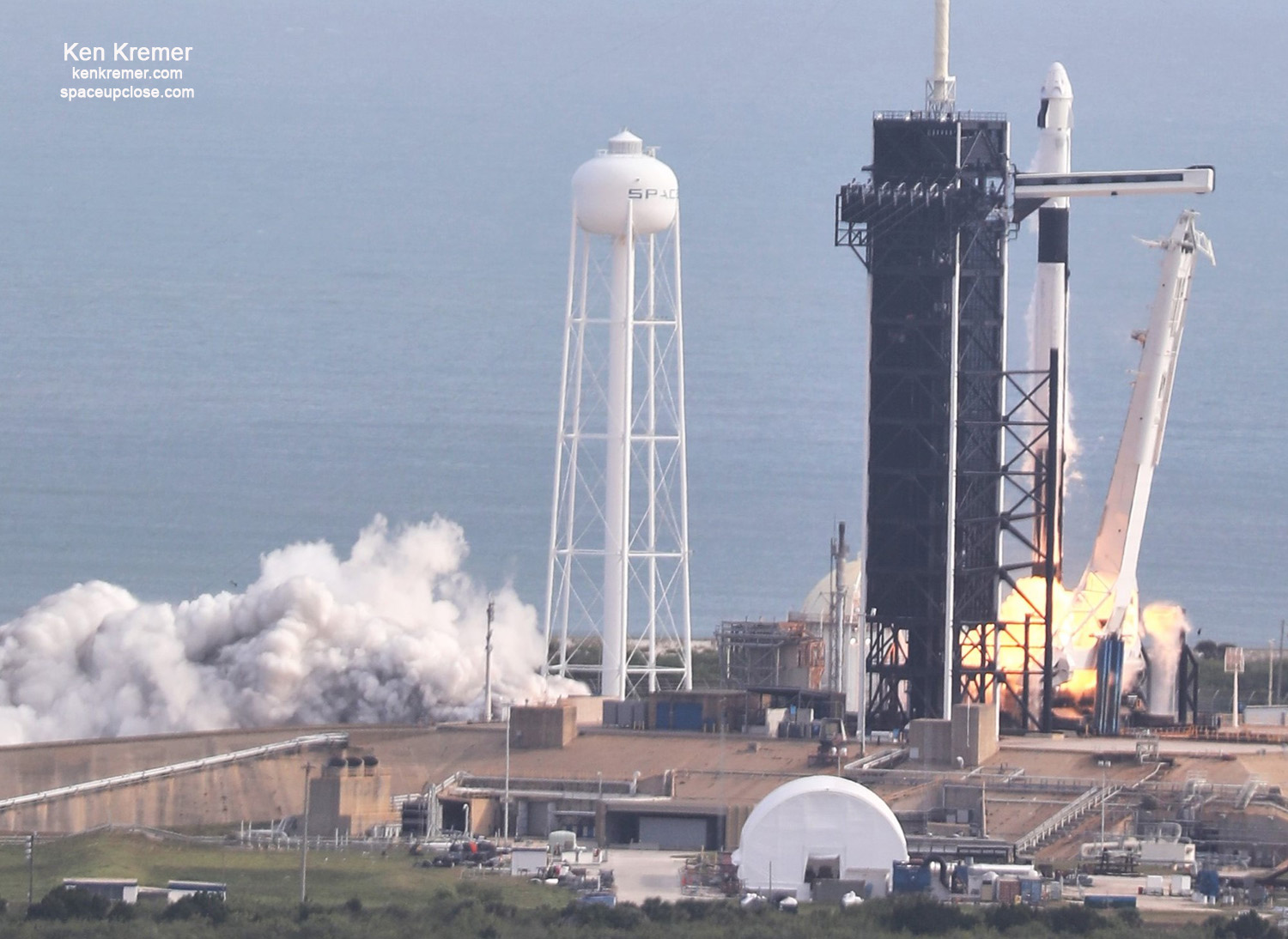
Now that all has seeming gone extremely well with the IFA test the next SpaceX Crew Dragon spacecraft – namely Demo-2 – could launch as early as the second quarter of 2020 with NASA astronauts Doug Hurley & Bob Behnken to the International Space Station – said NASA Administrator Bridenstine at the media briefing.
“The vehicle will be all ready at the end of February,” he noted at today’s pretest briefing.
However at least 2 more parachute tests must be successfully completed and there is a mountain of data analysis and review ahead to prove Dragon is truly safe to fly our astronauts to the ISS
That would restore US capability to launch astronauts to space for the first time since the forced retirement of NASA’s Space Shuttles in 2011.
Whether Hurley and Behnken remain aboard the ISS for weeks or months is yet to be determined, he added.
Recovering the Crew Dragon capsule at the conclusion of the test is also a prime objective.
From NASA:
Teams of personnel from SpaceX and the U.S. Air Force 45th Operations Group’s Detachment-3 out of Patrick Air Force Base will recover the spacecraft for return to SpaceX facilities in Florida and begin the recovery effort of the Falcon 9, which broke apart as planned.
“The past few days have been an incredible experience for us,” said astronaut Doug Hurley. “We started with a full dress rehearsal of what Bob and I will do for our mission. Today, we watched the demonstration of a system that we hope to never use, but can save lives if we ever do. It took a lot of work between NASA and SpaceX to get to this point, and we can’t wait to take a ride to the space station soon.”
Prior to the flight test, teams completed launch day procedures for the first crewed flight test, from suit-up to launch pad operations. The joint teams now will begin the full data reviews that need to be completed prior to NASA astronauts flying the system during SpaceX’s Demo-2 mission.
NASA’s Commercial Crew Program is working with the American aerospace industry as companies develop and operate a new generation of spacecraft and launch systems capable of carrying crews to low-Earth orbit and the International Space Station. Commercial human space transportation to and from the station will provide expanded utility, additional research time and broader opportunities for discovery on the orbiting laboratory. The program also has the benefit of facilitating and promoting for America a vibrant economy in low-Earth orbit.
SpaceX tweeted a dramatic video showing the firing of the SuperDraco thruster pushing the Crew Dragon away from the purposely failed rocket.
Crew Dragon separating from Falcon 9 during today’s test, which verified the spacecraft’s ability to carry astronauts to safety in the unlikely event of an emergency on ascent pic.twitter.com/rxUDPFD0v5
— SpaceX (@SpaceX) January 19, 2020
The Crew Dragon Super Draco thrusters were fired to verify the spacecraft’s ability to separate from the Falcon 9 in flight at high altitude to carry astronauts to safety in the event of an emergency during ascent.
The SuperDracos were triggered to fire for a launch escape at about 84 seconds after liftoff and at an altitude of about 20 km while generating almost 130,000 pounds of thrust.
The Crew Dragon continued skyward on an escape trajectory to a maximum altitude of about 42 km and then jettisone the spent trunk no longer needed.
Soon thereafter the four parachutes were deployed 5 minutes after liftoff to slow the descent for a splashdown due east of KSC and the Cape at a distance of about 20 miles (32 kilometers).
The In Flight Abort demonstration test is a critical test hurdle for SpaceX to prove that a human rated Crew Dragon spacecraft will be pulled away safely in a split second in case of a catastrophic failure of the Falcon 9 rocket in flight at high altitude and save the astronauts lives using the Super Draco abort engines mounted on the side wall of the spaceship Crew Dragon.
NASA astronauts could only fly aboard Crew Dragon following a successful IFA demonstration.
The Falcon 9 launched from pad 39A for the IFA test flight is recycled Booster 1046 and has flown 3 times. It is also the first Block 5 version Falcon 9.
Furthermore, there are no grid fins and landing legs attached to the side of the booster – because it is not expected to survive the survive the severe aerodynamic forces induced by the IFA test after triggering separation of the Crew Dragon.
My IFA test launch commentary on WFTV ABC TV News Orlando:
https://www.wftv.com/news/local/brevard-county/brevard-county-officials-look-out-rocket-debris-beach/UN5EL6OL7FGUZEXW44QVJMYGZI/
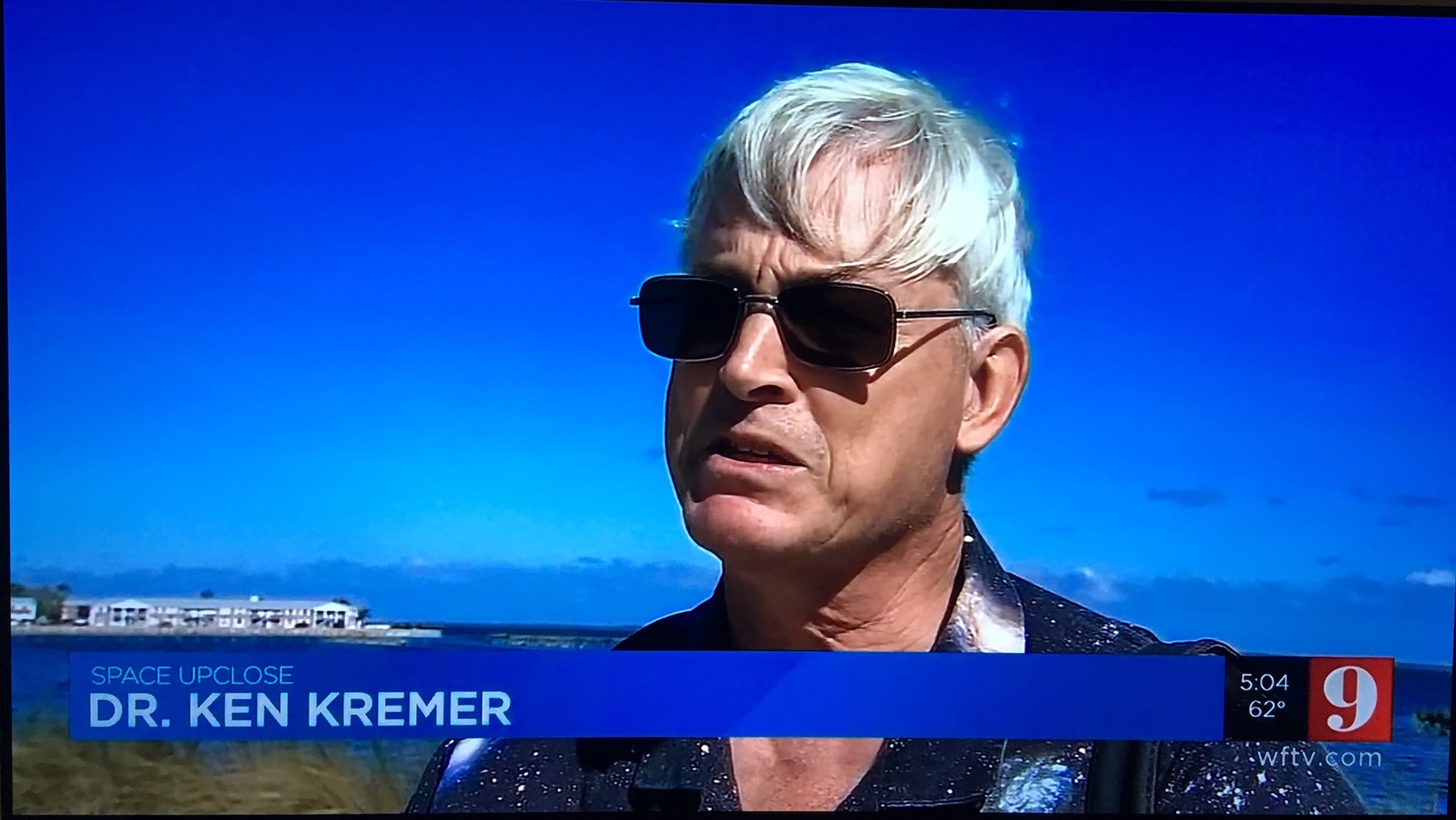
Watch Ken’s continuing reports onsite for live reporting of upcoming SpaceX and ULA launches including In-Flight Abort, Starlink and Solar Orbiter in Jan/Feb 2020 at the Kennedy Space Center and Cape Canaveral Air Force Station.
Stay tuned here for Ken’s continuing Earth and Planetary science and human spaceflight news: www.kenkremer.com –www.spaceupclose.com – twitter @ken_kremer – email: ken at kenkremer.com
Dr. Kremer is a research scientist and journalist based in the KSC area, active in outreach and interviewed regularly on TV and radio about space topics.
………….
Ken’s photos are for sale and he is available for lectures and outreach events
Ken’s upcoming outreach events:
Jan 19: 7 PM, Quality Inn Kennedy Space Center, Titusville, FL. “SpaceX In Flight Abort and Starlink launches Jan 19 & 21. ULA Solar Orbiter Feb 5.” Free. In hotel lobby. Photos for sale
